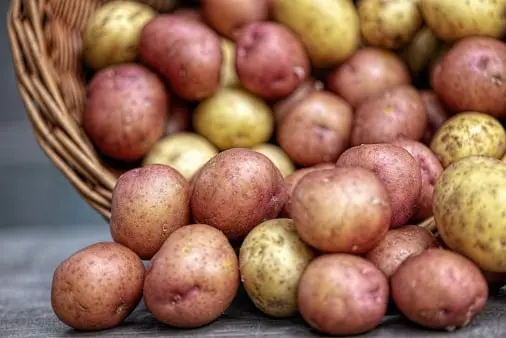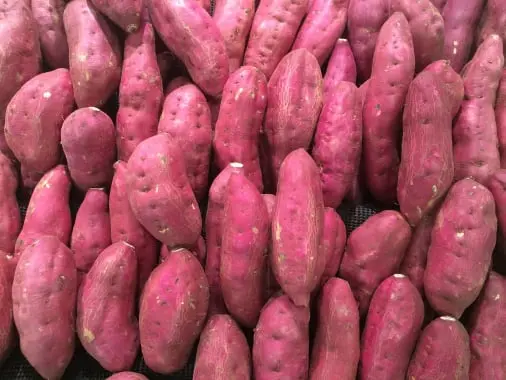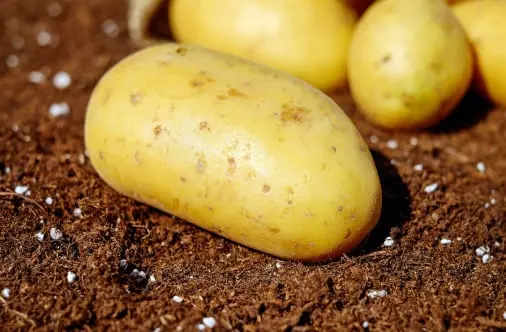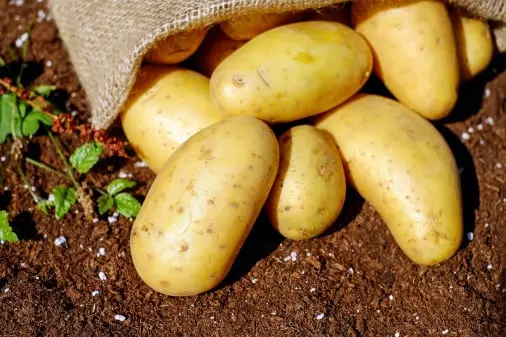Potato quality inspection app with AI potato quality control:
Potato quality inspection app enforces easy QC with AI potato quality control, manages your potato processing, storage, packing & value adding. Complete potato quality & business management solution.

Potato Quality inspections during production
View App Specifications.
There are three main criteria which define the quality of potato: tuber quality, skin finish and storage and cooking quality. A balanced crop nutrition program is important to help manage all of these criteria. SMEs (Small Medium Entreprises) Rama is one of the potato chip producers in Batu city with the brand named "Rama Djaya". To produce competitive products, SMEs must continue to improve the quality of products by minimizing defects in the production. The defects in the quality of potato chips occur in color, crunchy and size. The purpose of this research is to identify and analyze the factors that can cause defects in potato chips. The research method used is Six Sigma DMAIC (Define, Measure, Improve, Analyze, and Control). The results showed that for the defined stage, the main priority for quality improvement using the CTQ (Critical To Quality) was color change by 92%. In the measurement stage, the value of process capability produced the final yield of 51.69% which showed a lower percentage compared to the Indonesian National Standard of 69.2%. The analysis result of DPMO (Defect Per Million Opportunity) value was 483,091.79, equal to 1.54 sigma so it needed to improve its strategy in production.

Daily Potato packhouse hygiene checklist
Tuber quality
Tuber quality, whether it is dry matter content, starch content, internal disorders or cooking ability is critical for the end user.
Nitrogen encourages leaf and tuber growth and maximises starch production, phosphate maintains leaf and tuber growth and influences starch quality and content, potassium maximizes water uptake and dry matter production and can help reduce the level of bruising, calcium minimizes internal rust spot and black spot, magnesium ensures a strong photosynthetic capacity and good growth, boron helps reduce internal rust spot and enzymatic blackening.
Potato Skin finish quality
Skin finish is becoming more important as consumers increasingly demand potatoes with clean, attractive skins, particularly when buying pre-packed or loose potatoes. Tubers with surface diseases are not only less attractive, they are likely to have a reduced storage life.

Potato Quality control & management
Correct balanced nutrition of the plants will reduce the incidence of tuber skin disorders and improve the skin finish. Calcium strengthens tuber skins providing better resistance to diseases, boron enhances the effect of calcium by improving uptake and so and can reduce levels of common scab and other tuber diseases, zinc can minimize powdery scab and sulphur may reduce both powdery and common scab infection.
Storage and cooking quality
Storage and cooking quality cannot be overlooked and once the crop has been harvested the job is not finished as in most countries potatoes have to be stored to provide continuity of supply throughout the year. Tubers that are less prone to bruising or discolouration will store significantly better and retain better cooking qualities.

Potato Supplier quality inspection & management
Because of climate change, the reduction of arable land, increasing population, and frequent occurrence of natural disasters, food security has become a crucial issue. To face this situation, increased food supply has become a priority in the world’s development agenda. In terms of nutritional value, adaptability to diverse environments and yield potential, the potato is a preferred crop, especially in developing countries. According to FAO statistics, potato production in developing countries has increased by 94.6 percent over the last 15 years (Table 1). Out of the four major food crops (rice, wheat, potato and maize), the potato has the best potential for yield increases.